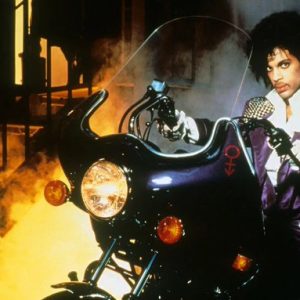The Demo Tape That Changed R&B: Revisiting Mary J. Blige's Pivotal Discovery Story
Once upon a time in the vibrant world of late '80s New York, a raw, unfiltered talent was about to change the landscape of R&B forever. Enter Mary J. Blige, the Queen of Hip-Hop Soul, whose pivotal demo tape would transform not just her life but also the entire genre of rhythm and blues. In this retrospective, we dive into the magical moment when an unsigned 20-year-old dropped an unreleased track at a club, leading to a discovery that would set her on a path to stardom.
The Background: A Voice Like No Other
Before Mary J. Blige graced the charts with her unmatched vocal prowess and poignant lyrics, she was just another hopeful artist trying to make her name in a competitive industry. Born into the hustle and bustle of Yonkers, New York, she was influenced by the sounds of soul legends like Aretha Franklin and Chaka Khan. But it was hip-hop that ultimately shaped her unique sound. With everyday struggles and heartbreak as her lyrical muse, Mary J. brought fierce emotion and authenticity to a genre that craved it.
The Legendary Demo Tape: A Game Changer
In 1991, the stars aligned when Mary recorded a demo tape featuring her rendition of "Ain't Nobody." She made the bold move to slip this tape to a local DJ, which eventually landed in the hands of Andre Harrell, the head of Uptown Records, at a club party in NYC. The moment he heard her voice, he was instantaneously captivated. Picture it: a smoky club filled with energy and anticipation, and then—BOOM—Mary's vocals cut through the noise like a hot knife through butter. The room went silent, and in that unforgettable instant, the wheels of her destiny began to turn.
That demo tape became the cornerstone for Mary’s breakout debut album, “What's the 411?” which dropped in 1992. Featuring hit tracks like "Real Love" and "You Remind Me," this project would ignite a new sound in R&B—a fusion of hip-hop and soul that spoke directly to the trials and tribulations of a generation.
A New Era in Music: The Fusion of Styles
What made Blige's sound groundbreaking? Her ability to interlace the rhythms of hip-hop with the soulfulness of R&B was revolutionary. Artists like Aaliyah and Usher would later follow in her footsteps, but Mary was the trailblazer championing a movement that gave voice to Black female artists in a predominantly male-driven music industry. The world had never heard anything quite like it.
Her raw emotion transformed the way women expressed heartbreak and resilience in their music. Where previous artists often leaned toward polished ballads, Mary tapped into her vulnerability, sharing her stories with such intensity that audiences everywhere could feel her pain and triumph.
The Impact and Legacy: A Queen is Born
Mary J. Blige didn’t just create hits; she created anthems. Her 1992 debut sold over three million copies, earning her critical acclaim and commercial success. She quickly became synonymous with the "new sound" of R&B that shifted mainstream music forever. By winning multiple Grammy Awards and selling over 50 million records worldwide, Mary earned her rightful throne as the "Queen of Hip-Hop Soul."
But beyond the accolades, it was her influence on other artists that shaped the genre for years to come. Contemporary icons like H.E.R., SZA, and Ella Mai have cited Mary J. as a significant inspiration, proudly carrying on the torch of authenticity she lit.
The Comeback and Enduring Relevance
Fast forward to today, and Mary J. Blige’s star continues to shine brightly. Her recent ventures, including her celebrated performance at the Super Bowl and her critically acclaimed album "Good Morning Gorgeous," prove she is a force to be reckoned with. A true survivor of the industry, her journey through personal struggles—from addiction to heartbreak—has only fortified her artistry and cemented her status as a role model for aspiring musicians.
As we revisit the historic demo tape that changed everything for Mary J. Blige, it’s crucial to recognize that her influence is not just felt in her records but in the very fabric of R&B. She opened the door for a generation of artists to embrace their narratives, vulnerability, and strength, making her an everlasting icon.
Conclusion: The Legacy Lives On
The demo tape that catapulted Mary J. Blige from obscurity to royalty is a testament to the power of belief—both in oneself and in the art form. As we celebrate Mary’s undeniable impact on R&B, we are reminded that true artistry knows no bounds and that the right moment can change everything. So here’s to the Queen herself—Mary J. Blige—forever reigning in the hearts of fans and continuing to break barriers in music.
As her legacy continues to inspire countless artists, one thing is clear: it all began with a simple demo tape, and for R&B, it was a change that echoes through the ages.

